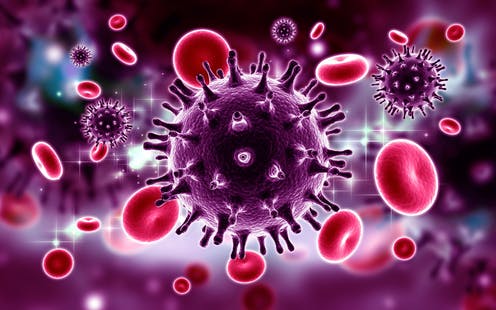Study Of NEF Protein Released Due To HIV Infection Could Lead To New Therapeutic Developments
Source: Massachusetts General Hospital Jan 13, 2019 6 years, 3 months, 1 week, 6 days, 22 hours, 14 minutes ago
A study from a Massachusetts General Hospital (MGH) research team has identified the specific function of a protein found in HIV and related viruses that appears to slow down viral spread in the earliest stages of infection. But they also found that, after initially slowing down the spread of infection, that function may help the virus survive later on by evading the immune response. Their report has been published in
Cell Host & Microbe.
"HIV uses several proteins with a number of functions predicted to change the migratory patterns of infected cells," says Thorsten Mempel, MD, Ph.D., of the MGH Center for Immunology and Inflammatory Diseases, senior author of the report. "Our investigation identified a particular function of the protein Nef as responsible for disrupting the ability of infected T cells to migrate, slowing the rate at which the virus initially spreads after infection. However, that same function allowed the virus to persist at a later time when the adaptive immune response, especially the response of cytotoxic 'killer' T cell has become activated. These findings suggest that this function of Nef evolved to help HIV evade the immune response but at the expense of initially slower spread in an infected animal."
Recent studies by Mempel's team and others have suggested that in contrast to the conventional view that HIV spreads throughout the body as free viral particles the virus can be transported by infected T cells that travel through tissues and the circulatory system and then spread the infection by direct contact with uninfected cells. Since Nef has previously been shown both to downregulate the function of several proteins involved in signal transduction and to disrupt processes thought to drive cellular migration, the MGH team took a detailed look at exactly how Nef and other HIV proteins exert their effects on the motility of infected T cells.
Their experiments in mice with key elements of a human immune system—the only animal model capable of being infected with HIV, supported previous findings that Nef reduces the migration of infected cells by disrupting the assembly and disassembly of a protein called actin into branched filaments. Actin filaments support the shape of cells and enable them to move by pushing the outer membrane out on one side while retracting the membrane on the other end. This function of Nef is carried out through the interaction of a "hydrophobic patch, a group of water-repelling amino acids closely spaced on the surface of the protein with a group of cellular proteins including an enzyme called PAK2.
In the first weeks after female mice were vaginally inoculated with two strains of HIV: one with a mutated form of Nef in which the hydrophobic patch is disrupted and one unmutated strain, the Nef-mutant strain became dominant, implying that T cells infected with that strain had spread the infection more rapidly than those with the unmutated strain. But over time the mutant strain disappeared and the unmutated
strain of HIV became dominant, coinciding with increased activity of the anti-HIV cytotoxic T cell response. The authors also found that the benefit to viral survival conferred by the hydrophobic patch on the unmutated form of Nef was not seen in cellular studies, suggesting that it had developed in response to the immune system pressures present in a live animal.
<
;br />
"We know that other functions of Nef appear to have evolved primarily to help HIV evade the immune response, so it makes sense that disruption of the actin cytoskeleton serves a similar purpose," says Mempel, who is an associate professor of Medicine at Harvard Medical School. "The fact that this appears only in living animals clearly suggests that important biological properties of the virus are not apparent in the cell culture systems traditionally used to study HIV. This means there is still a lot to discover about what HIV can do and what its potential weaknesses are. Importantly, if it becomes possible to target the ability of Nef to disrupt the cytoskeleton, we may be able to increase the vulnerability of HIV to antiviral treatment strategies, such as vaccination or broadly neutralizing antibodies."
Reference: Shariq M. Usmani, Thomas T. Murooka, Maud Deruaz, Wan Hon Koh, Radwa R. Sharaf, Mauro Di Pilato, Karen A. Power, Paul Lopez, Ryan Hnatiuk, Vladimir D. Vrbanac, Andrew M. Tager, Todd M. Allen, Andrew D. Luster, Thorsten R. Mempel. HIV-1 Balances the Fitness Costs and Benefits of Disrupting the Host Cell Actin Cytoskeleton Early after Mucosal Transmission. Cell Host & Microbe, 2019; 25 (1): 73 DOI: 10.1016/j.chom.2018.12.008
